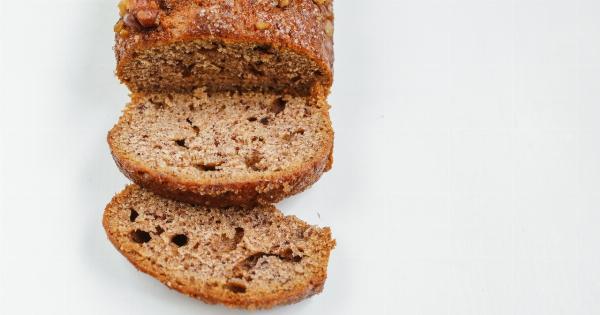When it comes to purchasing milk, one of the most common debates is whether to choose full-fat or fat-free milk. The dairy aisle can be overwhelming, with numerous options available, each claiming to provide its own set of health benefits.
In this article, we will delve into the dairy dilemma and explore the pros and cons of both full-fat and fat-free milk, helping you make an informed decision.
Understanding the Difference
Before we dive into the advantages and disadvantages of full-fat and fat-free milk, let’s first understand what sets them apart. Full-fat milk, as the name suggests, contains a higher amount of fat compared to fat-free milk.
On the other hand, fat-free milk has had most, if not all, of the fat removed. The difference in fat content is what primarily affects the taste, texture, and nutritional profile of the milk.
The Case for Full-Fat Milk
Full-fat milk has been consumed for generations and has its fair share of loyal enthusiasts. Here are some reasons why people opt for full-fat milk:.
1. Taste and Creaminess
Full-fat milk is known for its rich, creamy texture and indulgent taste. The higher fat content gives it a smooth mouthfeel and enhances the flavor.
Many individuals prefer the taste of full-fat milk, especially when consumed on its own or in rich desserts and sauces.
2. Nutrient Absorption
Fat-soluble vitamins, such as vitamin A, D, E, and K, require dietary fat to be properly absorbed and utilized by the body.
Full-fat milk naturally contains these fat-soluble vitamins, which means you can better absorb their benefits when consuming full-fat milk rather than fat-free milk.
3. Satiety
The higher fat content in full-fat milk helps promote a feeling of fullness and satiety, which could potentially curb overeating or snacking between meals.
This can be particularly beneficial for individuals trying to manage their weight or who struggle with feelings of hunger.
4. Culinary Uses
Full-fat milk plays a vital role in cooking and baking. Its creaminess and higher fat content contribute to the texture and taste of various dishes, whether it’s a creamy pasta sauce, a velvety soup, or a decadent dessert.
It is often the preferred choice for chefs and home cooks alike.
The Case for Fat-Free Milk
Fat-free milk, also known as skim milk, has gained popularity in recent years due to its perceived health benefits. Let’s explore some of the reasons why people choose fat-free milk:.
1. Lower Calorie Content
One of the main attractions of fat-free milk is its lower calorie content compared to full-fat milk.
By removing the fat, fat-free milk provides a lower-calorie alternative, making it a suitable choice for individuals aiming to reduce their overall calorie intake.
2. Heart Health
Studies have linked the consumption of high-fat dairy products to an increased risk of heart disease due to their saturated fat content.
In contrast, fat-free milk contains little to no saturated fat, making it a heart-healthy choice for those concerned about cardiovascular health.
3. Weight Management
Fat-free milk can be helpful for individuals aiming to lose or maintain weight. With its lower calorie content and reduced fat content, fat-free milk can contribute to a calorie deficit, which is essential for weight management.
4. Lactose Intolerance and Digestive Issues
For individuals who are lactose intolerant or have trouble digesting dairy fat, fat-free milk provides a suitable option.
The removal of fat significantly reduces lactose and can alleviate discomfort associated with lactose intolerance or digestive issues caused by dairy products.
Considerations and Recommendations
While the decision to choose between full-fat or fat-free milk ultimately depends on individual preferences and dietary needs, here are a few key considerations:.
1. Nutrient Balance
Although full-fat milk contains more calories and fat, it also provides essential fat-soluble vitamins.
If you consume a well-balanced diet and incorporate other sources of healthy fats, such as avocados, nuts, and olive oil, opting for fat-free milk might be a viable choice. However, if you have a limited intake of these fats, full-fat milk can help bridge the nutrient gap.
2. Health Conditions
If you have specific health conditions, such as high cholesterol levels or a history of heart disease, it may be beneficial to choose fat-free milk to minimize your saturated fat intake.
Consulting a healthcare professional or registered dietitian can provide personalized guidance based on your health needs.
3. Taste and Satisfaction
Preference plays a significant role in enjoyment and satisfaction with your choice of milk. If you genuinely enjoy the taste and texture of full-fat milk and it aligns with your dietary goals, there is no harm in indulging in moderate amounts.
Remember that both full-fat and fat-free milk can be part of a healthy diet when consumed in moderation.
The Verdict: Full-Fat or Fat-Free?
The choice between full-fat and fat-free milk ultimately depends on your personal preferences, health goals, and overall diet.
It is crucial to consider your nutritional needs, taste preferences, and any underlying health conditions before making a decision.
Ultimately, a balanced and varied diet, along with mindful consumption of dairy products, is key.
Moderation and portion control are essential, as both full-fat and fat-free milk can contribute to a healthy lifestyle when incorporated into a well-rounded diet plan.






























